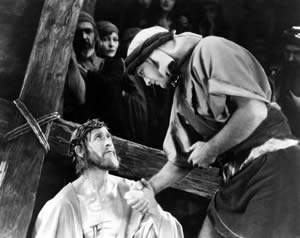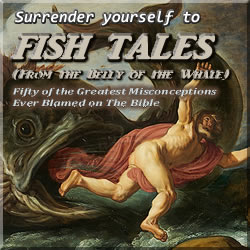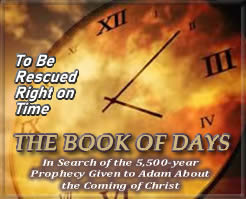The Stage is Set (Cont’d)
Beyond Babel, Beyond Words
How do we, in the twenty-first century, validate the truth of Scripture if the only evidence left to us consists of books written long ago and communicated down to the present day via an array of translations? Admittedly, when one addresses the dilemma in these terms, our problem certainly does appear hopeless, does it not? Yet this is exactly the series of obstacles that the biblical record as a whole is claiming to surmount. But how? Could it be that there is actually a key to unlocking the mysteries of The Bible as so many throughout the ages have suggested? And if there really is a key of interpretation, then why has mankind been unable so far to establish some kind of consensus with this process?
Strangely enough, I believe, the answer to such a conundrum is really quite simple, if by the word simple one inserts the word non-mystical, because, contrary to popular opinion, finding the answer does not involve delving into the murky realm of Bible codes but rather into the all-too-human domain of the cinema. For in the cinema, one is presented with a very specific language—a language not comprised of words but a dialectic of visual imagery, that is to say, a series of images made more meaningful via their sequential arrangement. In the more than one hundred years of its existence, this international art form has managed to accomplish what was best described by American film director D.W. Griffith. “We’ve gone beyond Babel, beyond words. We’ve found a universal language.”1 As a result, this language of the cinema—composed entirely of images, of symbols, of meanings—is uniquely capable of imparting a message that transcends any known language barrier. Moreover, it is this simple usage of symbolism to convey meaning—as opposed to a more arcane approach—that most closely resembles the way in which The Bible manages to articulate its deepest truths.
Story Continues Below
To hear Kent, Zen Garcia and S. Douglas Woodward as they continue their discussion concening the implications of the 5,500-year prophecy spoken of in the various apocryphal sources and confirmed via the chronology of The Septuagint, CLICK BELOW.
Story Continues From Above
Consider this: Prior to the industrial revolution of the late eighteenth century, the world remained compartmentalized—geographically, culturally, ideologically. As a result of industrialization, there came an explosion in mass transportation technology in the form of steam locomotion, which within a few short decades laid the foundation for everything that followed. With electrification came the telegraph, the telephone, the phonograph, the automobile, the cinema, the radio, and the airplane, which physically connected the world in a manner previously unimaginable. But, while all these inventions abolished the barriers between physical spaces, none of them could provide the much-needed means to eliminate the psychological barriers that remained. Consequently, a world without geographic barriers has only managed to create an environment where previously disparate regions of the globe began to commingle in unanticipated ways. Rather than unite the world, the abolition of borders has done far more harm than good, as evidenced by two world wars, followed by decades of regional war ever after.
Amidst all this technologically-induced strife, only one invention has succeeded in rising above the mayhem of clashing titans, of south rising against north, of east rising against west. Only the cinema has provided humanity with the potential to bridge the psychological gap that was laid bare in the wake of the tearing asunder of physical barriers, and only masters of the cinema have learned over the course of time to perfect an art form that has managed to transcend all cultural and ideological boundaries, proving once and for all that the peoples of the world are not so different after all. North, south, east, west: When seen through the eyes of the universal language of the cinema, these so-called “pockets of ideology” bear a striking, if not haunting, similarity to one another.
It is this unique language of imagery, symbolism, and meaning, then, that, I am convinced, is the key to understanding God’s message in The Bible; not the vague, surreptitious sort that only a computer genius can hope to decipher, but one that is laid bare for all to see on pages of black and white. This is why, when pioneers of the cinema sought to distance their product from their childish reputation as mere nickelodeons, they did so by cleverly embedding the universal message inspired by Holy Writ. By virtue of this infusion, the world’s first patently modern art form soon took on an unprecedented maturity. Inspired by the timeless tapestry of biblical history, prescient producers breathed new life into their creations: Heroes and heroines alike strove against overwhelming odds, brother pitted jealous will against brother, merciless overlords sought to enslave the free, and amidst it all, the Divine One dipped His benevolent hand into the well of human misery. In theaters around the globe, themes of tragedy and hope, of crime and punishment, of ruin and rebirth, resonated deeply, from city to city, state to state, and country to country.
Furthermore, in a truly ironic fashion that I am sure no one has yet to fully appreciate in terms of its prophetic significance, for its first thirty years of existence the cinema was forged into being without uttering a single, spoken word. The silver screen was above all a silent one. To be sure, the written word was periodically inserted, but primarily it was an art form that conveyed its story entirely by way of a series of visual images. Concluded British film critic David Robinson: “This was the most truly international era in which was created a new art of great subtlety and sophistication.”2 Through all manner of metaphor, allegory, and simile, the cinema perfectly conveyed its poetic vision in a way that could be understood in every corner of the globe without an ounce of its intended message ever being lost to mistranslation.
This to me is what God—in His preponderance for using types and shadows—had in mind when He set out to communicate His truth to mankind. He speaks through dramas that transcend interpretation, that is to say, through universally recognizable symbols of dramatic significance that supersede the brute limitations of the intellect and speak directly to the heart and soul of humanity. This is why The Bible repeatedly focuses on the enduring elements that constitute the human condition in all its ignominious glory—of courage and cowardice, of sacrifice and greed, of faith and doubt, of honesty and deceit, of revenge and mercy, of loyalty and betrayal, of love and hate. This is why the truths of Scripture are so often couched in double and triple parallels of events that span many generations, as when the likes of Isaac, Joseph, Moses, and Jonah all foreshadow the life of Jesus.
In this way, the Lord demonstrates His acute awareness that we, as members of a fallen race, require this process of foreshadow and payoff to apprehend the true nature of the Divine, much like an audience sitting in a darkened theater requires the necessary clues to penetrate the mystery that is being played out on the screen before it. And though we can only gaze in rapt anticipation upon these iconic dramas, as those who “look through a glass, darkly,” we are still able to grasp the truth conveyed in these scattered moments through time, and perceive in them a remarkable synergy that no mere mortal could have ever contrived.







